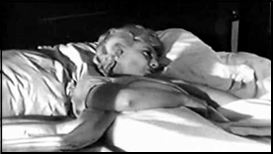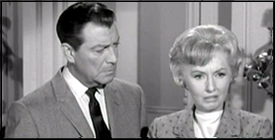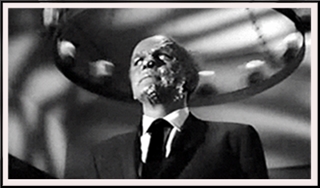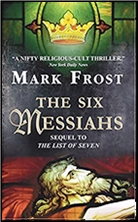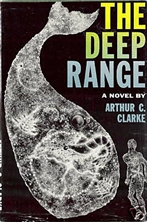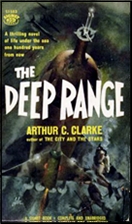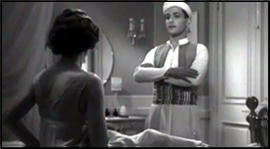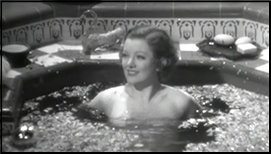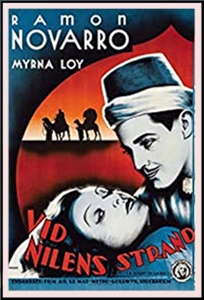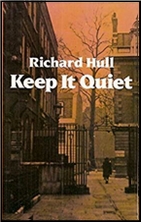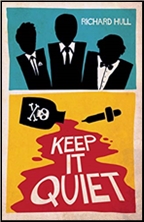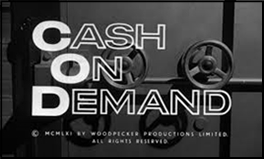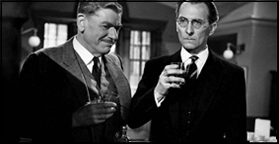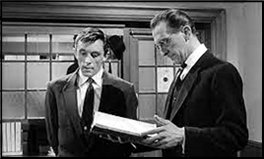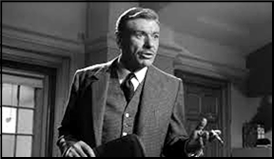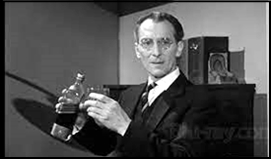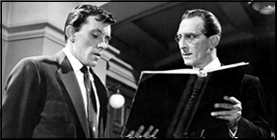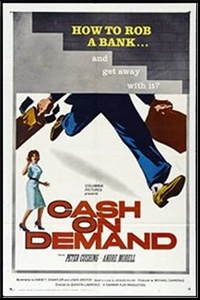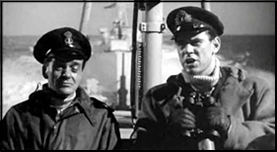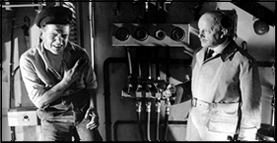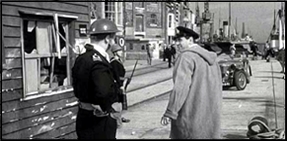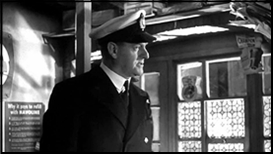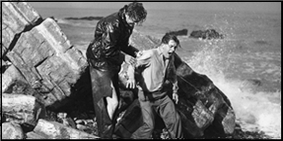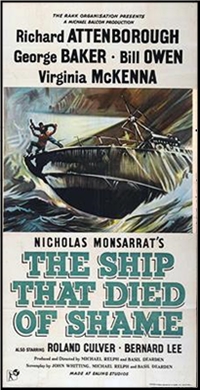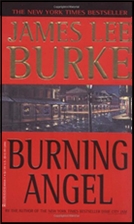REVIEWED BY DAN STUMPF:
ERIC AMBLER – Journey Into Fear. Hodder & Stoughton, UK, hardcover, 1940. Alfred A. Knopf, US, hardcover, 1940. Reprinted many times, in both hardcover and paperback.
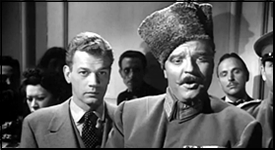
â— JOURNEY INTO FEAR. RKO Radio Pictures, 1943. Joseph Cotten, Dolores Del Rio, Ruth Warrick, Agnes Moorehead, Jack Durant, Everett Sloane, Orson Welles. Screenplay by Orson Welles & Joseph Cotten, based on the novel by Eric Ambler. Directed by Norman Foster & Orson Welles (the latter uncredited).
â— JOURNEY INTO FEAR. New World, 1975. Sam Waterston, Zero Mostel, Yvette Mimieux, Scott Marlowe, Ian McShane, Joseph Wiseman, Shelley Winters, Stanley Holloway, Donald Pleasence, Vincent Price. Screenplay: Trevor Wallace. Director: Daniel Mann.
A local video store was going out of business lately, and naturally I stopped by to see what priceless treasures I could pick up on the cheap. Among the things I emerged with was the remake of Journey Into Fear, adapted by producer Trevor Wallace from Eric Ambler’s 1940 novel (previously filmed by Orson Welles in 1942) and directed by Daniel Mann. Watching this, I began to suspect that Wallace’s script drew rather more from the 1942 film than from Ambler’s novel, so I pulled out the older film and the book to check my suspicions.
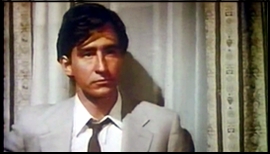
The 1942 film is an engagingly gimmicky piece, complete with the Mercury players (Agnes Moorhead, Everett Sloan et al.), but the effect is somewhat vitiated by Welles’ giving himself all the smart lines and by his decision to depict the quiet Graham (Joseph Cotton) as a boob.
The overall theme is deliberately un-heroic, which is probably just as well, given his strong visual style; a Welles movie with an out-and-out Hero would come off as altogether too Wagnerian. There is, in fact, more than a touch of Wagner in Welles’ two most nearly heroic characters, Rochester in Jane Eyre and MacBeth. But there I go digressin’ again
To be fair, there are a couple lines from the novel in the newer film and not in the 1942 version. But to be frank, huge chunks of Welles’ film seem to have been simply re-shot without credit and plunked down in this movie. When Orson Welles and Joseph Cotton adapted Ambler’s novel for the film (Cotton gets sole screen credit for the writing) they gave lines from one character to another, re-arranged scenes and added little bits of business, and all these changes appear just about shot-for-shot in the re-make.
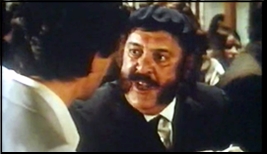
In fact, the earlier film features a hired killer who never speaks, because the guy who played him was no actor and would only do the part if they cut out all his lines. And sure enough, in the re-make the hired killer – played by the very capable actor Ian McShane — has no dialogue.
What difference exists between the two films is largely in the ordinary look of the ’74 film — the careful camerawork and set design of the original replaced by harsh color and tinny sound — and in the casting: Welles filled his film with capable bit players whose names mean little to most moviegoers, but players who leave a distinctive impression – the best-known are maybe Everett Sloane and Hans Conreid.
The re-make, on the other hand, is filled with second-rank “stars” mostly miscast or wasted: Sam Waterston is fine in the lead, and Vincent Price and Donald Pleasance have a couple good scenes (though Price makes a decidedly unconvincing Arab) but Zero Mostel, Shelley Winters, Scott Marlowe, Yvette Mimieux and even Stanley Holloway all just kind of take up space.
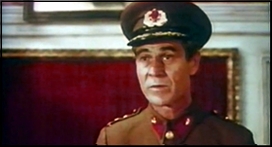
On the plus side, though, I’ve got to say Joseph Wiseman (fondly remembered as the first of the Bond villains and star of his own comic-book cover) is fine in the old Orson Welles part as Colonel Haki, there’s a solid, actionful ending, and a shoot-and-chase done entirely with sound effects. I still can’t figure out whether it was meant to be clever or merely cheap, but it’s enough to elevate this startlingly unoriginal film into the class of a pleasant time-filler.
Moving on just briefly to Eric Ambler’s novel (the excuse for this piece, after all) well, it was one of those things I read in 7th grade, and I was glad to come back to it. Even after seeing two movies and getting very familiar with the plot, I found the writing absorbing and the story suspenseful.
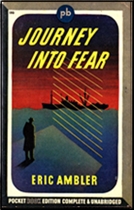
Ambler’s tale takes a bit of familiarity with the political map of war-torn Europe in the 40s; readers who didn’t live through it or bone up on their History might wonder at a story where British and German agents travel freely in Turkey while the British are supposedly arming the Turks against Hitler, but complications like this were pretty much gratis when Ambler wrote it, and by the time he gets to the crux of the tale — Howard Graham, an un-assuming British engineer trapped on a tramp steamer with a bizarre assortment of passengers, one of whom wants to kill him — he has notched the suspense up very agreeably indeed, and proceeds to a conclusion that is both cynical and exciting: no small feat, that.
Ambler also does a sharp job here creating an atmosphere of claustrophobic tension, and he adds a layer of genuine thoughtfulness: our hero starts out his journey as a man with secrets to hide, and he seems at first rather unique and isolated, surrounded by a ship full of very ordinary and rather dull background characters.
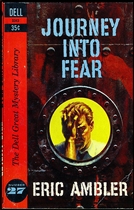
As the book and the journey go on, though, we discover the rest of the cast have their own secrets: droll, noble, sinister or just venal, the passengers who began the journey as stereotypes become real by the story’s end, and the central character seems much less unique — and more believable.
This works both as a plot device (I won’t say how) and as something more. Perhaps Ambler, writing in a world at war, was trying to say something about the worth of the Individual. Or maybe he was just setting us up for a delicious bit of anticlimax at the very end of the book, when the last secret is revealed.
Whatever, it makes for the kind of reading one remembers.
— Reprinted from The Hound of Dr. Johnson #42, January 2006.
